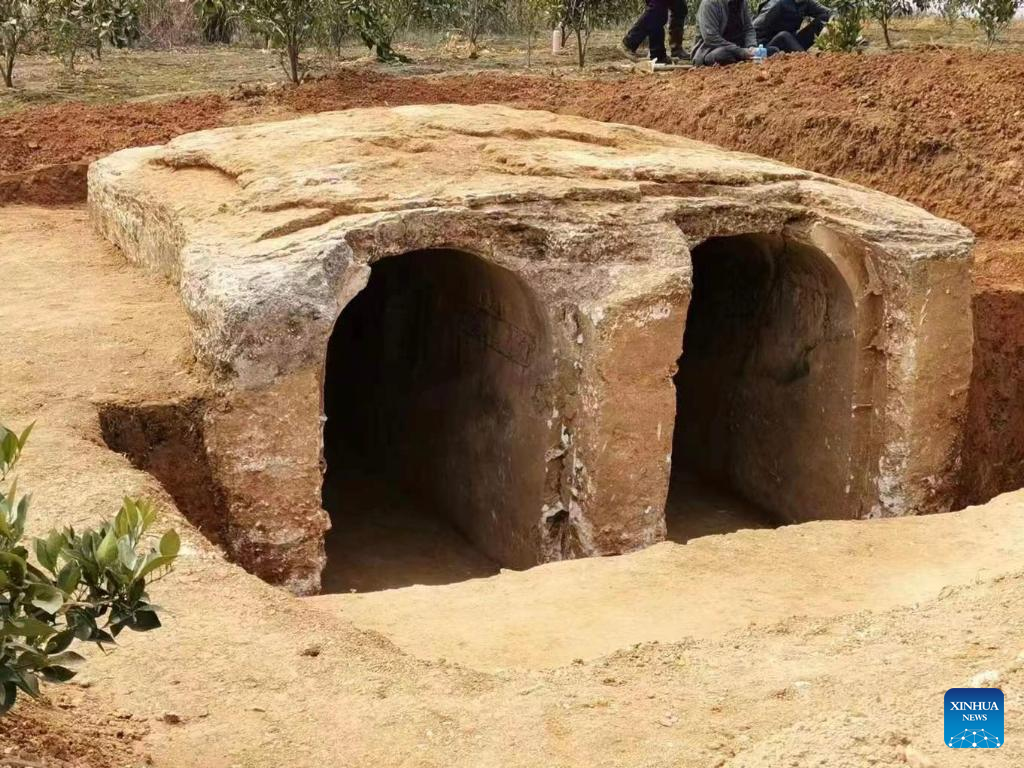
This photo taken on Feb. 25, 2023 shows a joint burial tomb dating back to the Ming Dynasty (1368-1644) in Lixian County, central China's Hunan Province.(Xinhua)
CHANGSHA, March 7 (Xinhua) -- Archaeologists in central China's Hunan Province have found a joint burial tomb dating back to the Ming Dynasty (1368-1644), according to the provincial institute of cultural relics and archaeology.
The tomb was discovered in Nanhe Village in Lixian County.
"Last year, when we carried out an investigation of cultural relics in the northwest mountainous area of Lixian County, we learned about this tomb from the villagers, and immediately started to protect it. In February of this year, the institute sent experts to excavate the ancient tomb with us," said Zhou Hua with the county's archaeological research and cultural relics protection center.
There are two burial chambers, the tops of which are arched. Murals featuring flowers were found in the tomb and 16 characters of auspicious words were discovered in a niche in the north chamber of the tomb, according to Tan Yuanhui, an associate researcher at the institute.
Due to tomb-raiding over the past dynasties, no coffins or funerary objects were found at the excavation site. "But judging from the shape, scale and murals found in the tomb, the owners are likely to have been people of a certain economic strength and social status," said Zhou.
Mural tombs are mainly found in northern China, while they are rarely found in southern China. The discovery of a mural tomb from the Ming Dynasty filled the gap in terms of mural tombs located in the Lishui River Basin, provided important clues and useful experience for the archaeological investigation which followed in the northwest mountainous area of Lixian County, and also provided important archaeological materials for studying folk customs and burial customs in the Lishui River Basin during the Ming Dynasty.
Archaeologists have completed the three-dimensional scanning data collection and in-situ protection of the mural tomb. ■



